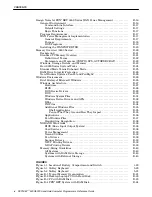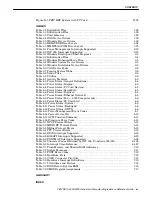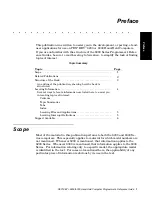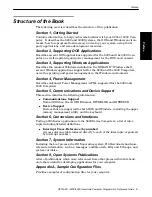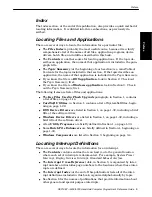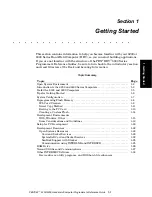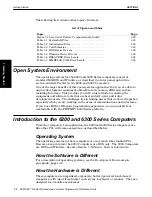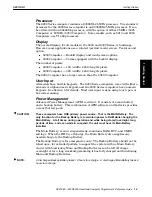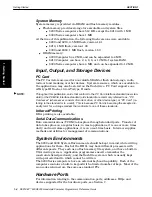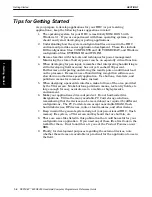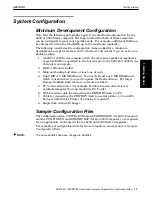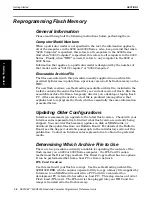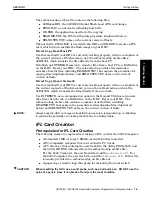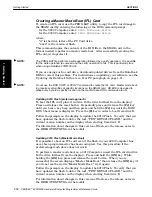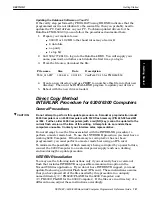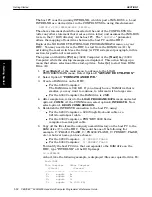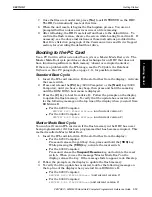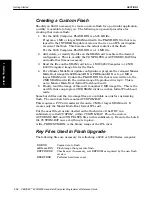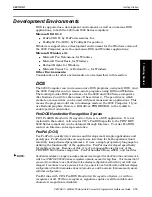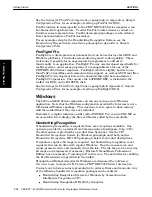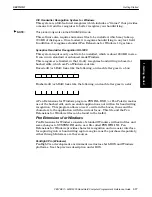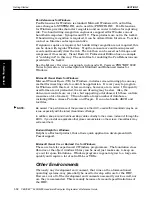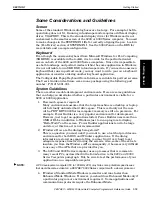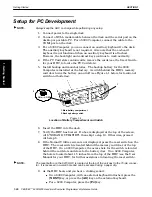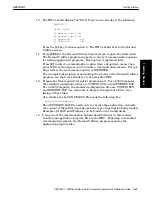
SECTION 1
Getting Started
1-6 PEN*KEY
R
6200/6300 Hand-Held Computer Programmer’s Reference Guide
Tips for Getting Started
As you prepare to develop applications for your HHC (or port existing
applications), keep the following basic suggestions in mind:
1. The operating system for your HHC is most likely ROM DOS 5 with
Windows 3.1. If you are experienced with these operating systems, you
should easily start developing or porting applications.
2. Understanding how the system configuration files are used in the HHC
environment provides easier application development. These files include
DOS configuration files: CONFIG.SYS and AUTOEXEC.BAT; and Windows
configuration files: SYSTEM.INI and WIN.INI.
3. Become familiar with the tools and techniques for power management.
Monitoring the state of battery power can be an especially critical function.
4. When developing for pen input, remember that interpreting handwriting is
still a developing field; accuracy has not yet reached 100 percent.
Furthermore, interpreting and storing the results puts an additional load
on the processor. Excessive use of handwriting recognition software can
slow down an otherwise speedy application. Use buttons, item lists, and
pullĆdown menus for common tasks, instead.
5. When designing a pencentric interface, make full use of the area provided
by the VGA screen. Make buttons, pullĆdown menus, text entry fields, etc.
large enough for easy, accurate use in a mobile or highĆpressure
environment.
6. Make your applications
driveĆindependent
. Do not hardĆcode drive
designations. Utilize the many available PC Card storage solutions,
remembering that the devices can be moved about as required by different
configurations. The PC Card slots can accept nonvolatile SRAM, flash,
hard disk devices, RF devices, radio or land modems, and other devices.
7. Keep in mind the general system design of your penĆoriented HHC: flash
memory file system, a CGA screen and keyboard that are builtĆin, etc.
8. There are some files listed in this publication that could be useful for your
configuration or application. If you need any of these files, first look in the
toolkit for them. If not found there, try one of the Product Forums on our
BBS.
9. Finally, for development purposes regarding the external devices, note
whether these items are available (or practical) for the application to use in
the field.
1. Getting Started

